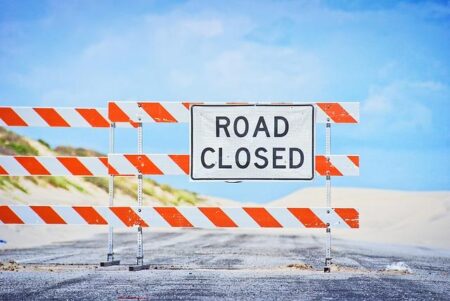Rethinking Philadelphia’s Public School Challenges: Beyond Tax Increases
Understanding the Root Causes of Philadelphia’s Education Struggles
Philadelphia’s public education system is grappling with multifaceted issues that extend well beyond the ongoing debate about raising taxes. While adequate funding remains essential, the core obstacles lie in entrenched inefficiencies and misplaced priorities within the district’s operations. For example, a disproportionate amount of the budget is consumed by administrative expenses and outdated resource distribution methods, which detract from direct classroom investment. These factors contribute to difficulties in retaining qualified teachers and providing essential student support services. Addressing these internal challenges could unlock significant improvements without imposing additional tax burdens on a community already feeling financial pressure.
Furthermore, Philadelphia’s schools often rely on uniform strategies that overlook the diverse needs of their student body. To foster meaningful progress, the district must embrace innovative curriculum development and deepen community involvement. Programs tailored to mental health support, career preparation, and extracurricular enrichment are vital for long-term success. City officials should focus on:
- Advanced professional development to prepare educators for dynamic classroom environments
- Utilizing data analytics to identify resource gaps and areas of achievement
- Strengthening collaborations among schools, families, and local enterprises
| Issue | Effect | Recommended Action |
|---|---|---|
| Excessive Administrative Costs | Reduces classroom funding | Optimize management structures |
| Outmoded Curriculum | Decreases student engagement | Develop customized learning programs |
| Limited Community Participation | Weakens support networks | Enhance local partnerships |
Dissecting Budget Priorities and Identifying Wasteful Spending
Examining Philadelphia’s education budget reveals a complex web of funding allocations that often fail to translate into improved student outcomes. Recent fiscal analyses highlight significant inefficiencies, particularly in administrative overhead and legacy pension obligations, which consume a substantial portion of resources that could otherwise support classroom activities. Despite official commitments to student success, a considerable share of funds is tied up in outdated systems and redundant services rather than innovative teaching initiatives or enhanced educator support.
Below is a detailed breakdown of the district’s expenditure from the most recent fiscal year:
| Spending Category | Budget Share | Comments |
|---|---|---|
| Teacher Compensation & Benefits | 55% | Largest allocation, though salary growth lags behind inflation |
| Administrative Expenses | 18% | Includes salaries for non-instructional staff and operational costs |
| Pension Payments & Debt Obligations | 15% | Long-term liabilities restricting budget flexibility |
| Building Maintenance & Repairs | 7% | Backlog of deferred maintenance remains a concern |
| Instructional Materials & Technology | 5% | Insufficient funding for modern educational tools |
- Ongoing pension liabilities continue to limit the district’s ability to reallocate funds toward current educational needs.
- Administrative growth has outpaced student enrollment declines, indicating inefficient resource use.
- Insufficient investment in classroom technology hampers efforts to prepare students for a digital future.
To maximize the impact of every dollar, Philadelphia must undertake a transparent review of spending priorities and implement structural reforms that reduce bureaucratic overhead and channel resources directly into student-centered programs.
Harnessing Community Involvement and Cutting-Edge Solutions for School Renewal
In response to persistent challenges, Philadelphia’s educators and community leaders are increasingly embracing grassroots efforts and technological advancements to rejuvenate the school system. By fostering strong partnerships among local organizations, families, and schools, they are developing customized initiatives that address specific neighborhood needs without increasing the tax burden. Successful pilot programs include after-school innovation centers and mentorship schemes that provide safe, stimulating environments while cultivating essential 21st-century skills.
Additionally, the strategic use of data analytics and digital platforms enables schools to monitor student progress more precisely and tailor interventions accordingly. This comprehensive approach integrates academic achievement with social-emotional development, offering a promising model for sustainable reform. These community-driven and tech-enabled strategies could serve as a replicable framework for other urban districts facing similar obstacles.
- Local mentorship initiatives: Connecting students with professionals to build confidence and career awareness.
- Innovation hubs after school: Encouraging creativity and STEM learning in secure settings.
- Data-driven instruction: Utilizing technology to personalize educational experiences.
| Program | Outcome | Community Involvement |
|---|---|---|
| Mentorship Networks | Boosted student self-esteem | Volunteer professionals |
| After-School Innovation Labs | Increased STEM participation | Nonprofit organizations |
| Student Data Systems | Customized academic support | School leadership |
Maximizing Impact Through Public-Private Collaborations
Given the limitations of tax-based funding, Philadelphia’s public schools stand to gain significantly from strategic partnerships with private sector entities. Collaborations with local businesses, philanthropic groups, and nonprofits bring fresh resources, innovative ideas, and specialized expertise that traditional funding channels often lack. These alliances facilitate the introduction of advanced technologies, infrastructure improvements, and targeted programs designed to meet the unique needs of Philadelphia’s students, thereby enhancing educational outcomes.
Advantages of public-private partnerships in education include:
- Access to industry-specific knowledge and career development pathways
- Expanded extracurricular and enrichment opportunities
- Shared responsibility frameworks emphasizing measurable results
- Stable funding streams that supplement fluctuating public revenues
| Partner Type | Contribution | Effect on Schools |
|---|---|---|
| Technology Firms | Equipment donations and mentorship | Enhances STEM education engagement |
| Nonprofit Organizations | After-school enrichment programs | Improves attendance and social skills |
| Philanthropic Foundations | Scholarships and grants | Reduces financial barriers for students |
Conclusion: Toward Sustainable and Effective Educational Reform in Philadelphia
As Philadelphia confronts the ongoing challenges within its public school system, it becomes evident that increasing taxes alone will not resolve the underlying issues. A holistic strategy emphasizing transparency, innovation, and active community participation is essential to drive meaningful change. Without decisive and targeted reforms, the city risks further educational decline, jeopardizing the futures of its students and the vitality of the broader community. Policymakers, educators, and stakeholders must unite to develop solutions that enhance educational quality while minimizing financial strain on residents. The imperative for sustainable, impactful transformation in Philadelphia’s schools remains urgent and demands thoughtful, collaborative action.








